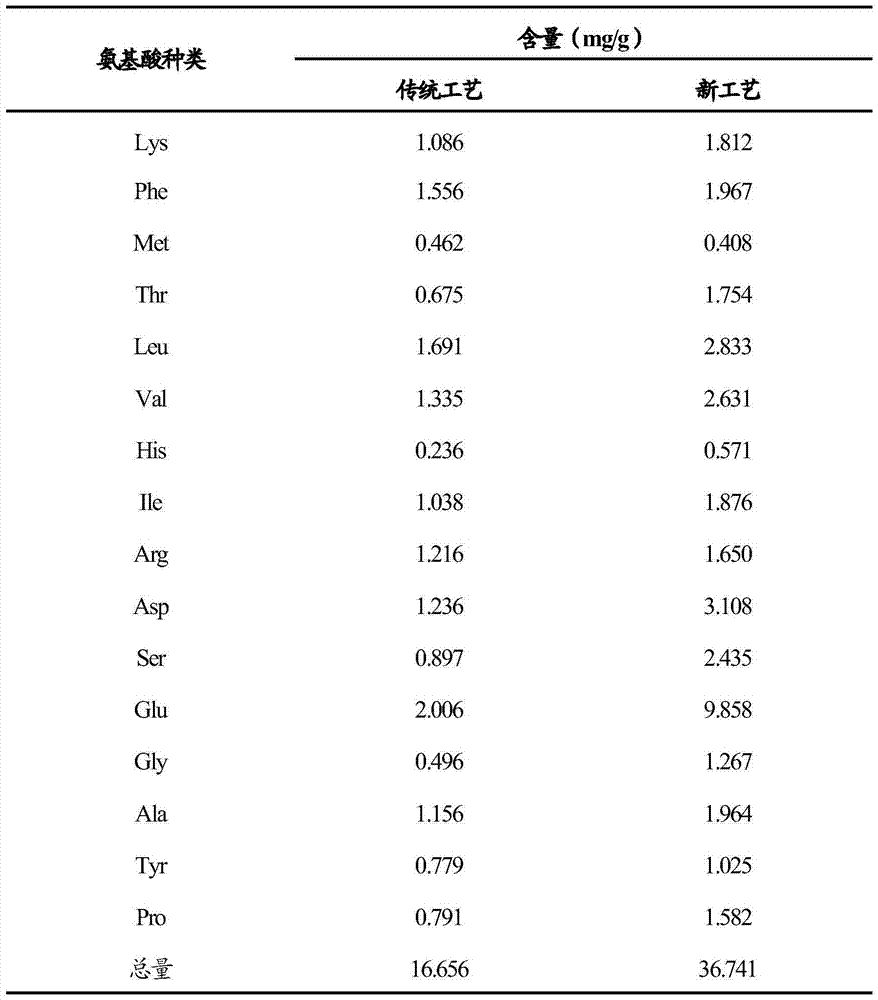Production process for high-amino acid soy sauce
A production process and high amino acid technology, applied in the field of soy sauce production, can solve the problems of increasing soy sauce, waste of raw materials, and weak market competitiveness of products, and achieve the effect of ensuring quality and increasing content
- Summary
- Abstract
- Description
- Claims
- Application Information
AI Technical Summary
Problems solved by technology
Method used
Image
Examples
Embodiment 1
[0018] A production process of high amino acid soy sauce includes the following steps:
[0019] A. Raw material cooking: soybean meal: bran: wheat: water is 9:3:1:6 into the cooking tank for cooking, the pressure is controlled at 1.15-1.25MPa, and the cooking time is controlled at 16-22min;
[0020] B. Making Daqu: Connect the cooked clinker to the compound koji containing acetic acid and sodium acetate, and transfer it to the koji making pool for ventilated koji making;
[0021] C. Mixed fermentation: The prepared Daqu is transferred to the fermentation tank, and after adding salt water, the fermentation is carried out at a temperature of about 50°C. The fermentation temperature is controlled not to be lower than 30°C, and the leaching is performed every other day, and the time is controlled within 25-35d. ;
[0022] D. Sterilization and filtration: The fermented crude oil is pumped into the crude oil tank after passing through a sterilization filter, and is blended and filled during...
Embodiment 2
[0026] A traditional soy sauce production process, the specific steps are as follows:
[0027] A. Raw material cooking: soybean meal: bran: water is added to the cooking tank in a certain proportion for cooking, the pressure is controlled at 1.10MPa, and the cooking time is controlled at 12-15min;
[0028] B. Making Daqu: Connect the cooked clinker to seed koji, and transfer it to the koji making pool for ventilating koji making. The temperature, ventilation, and koji making time are determined according to the growth of Daqu;
[0029] C. Mixed fermentation: The prepared Daqu is transferred to the lower fermentation tank, and after adding salt water, the fermentation is carried out at a temperature of about 50°C. The fermentation temperature is controlled not to be lower than 30°C, and the leaching is performed every other day, and the time is controlled at 24d;
[0030] D. Sterilization and filtration: The fermented crude oil is pumped into the crude oil tank after passing through a s...
PUM
 Login to View More
Login to View More Abstract
Description
Claims
Application Information
 Login to View More
Login to View More - R&D
- Intellectual Property
- Life Sciences
- Materials
- Tech Scout
- Unparalleled Data Quality
- Higher Quality Content
- 60% Fewer Hallucinations
Browse by: Latest US Patents, China's latest patents, Technical Efficacy Thesaurus, Application Domain, Technology Topic, Popular Technical Reports.
© 2025 PatSnap. All rights reserved.Legal|Privacy policy|Modern Slavery Act Transparency Statement|Sitemap|About US| Contact US: help@patsnap.com

